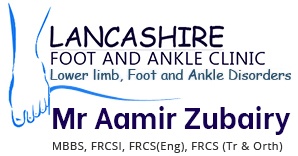What is osteoarthritis?
Also called degenerative joint disease, osteoarthritis is the most common type of arthritis and occurs most often in older people. This disease affects cartilage, the tissue that cushions and protects the ends of bones in a joint. With osteoarthritis, the cartilage starts to wear away over time. In extreme cases, the cartilage can completely wear away, leaving nothing to protect the bones in a joint, causing bone-on-bone contact. Bones may also bulge, or stick out at the end of a joint, called bone spurs.
What causes osteoarthritis?
Osteoarthritis is characterised by damaged articular cartilage, cartilage lining the joint. Advanced age is one of the most common reasons for osteoarthritis. You may also develop osteoarthritis if you had an injury or fracture in the past, if you have family history of osteoarthritis, suffering from joint diseases such as avascular necrosis and other congenital or developmental diseases.
What are your options?
There are several treatments and lifestyle modifications that can help you ease your pain and symptoms.
- Medications: Pain-relieving medications such as NSAIDs, COX-2 inhibitors and opioids may be prescribed. Topical medications such as ointments can be applied over the skin where there is pain. If the pain is very severe, corticosteroid injection can be given directly into the affected joint to ease the pain.
- Other treatments: Your physiotherapist will teach you exercises to keep joints flexible and improve muscle strength. Heat/cold therapy which involves applying heat or cold packs to the joints provides temporary pain relief. Lifestyle modifications can be done to control weight and avoid extra stress on the weight-bearing joints.
- Surgery: Joint replacement surgery is considered as an option when the pain is so severe that it affects your ability to carry out normal activities.
What are your success factors?
There are many factors that determine the success of osteoarthritis treatment. Some of these include:
- Severity of your condition
- Extent of injury/how advanced the disease is before you get help
- Your overall health
- Presence of associated/other diseases
- The specific technique performed to treat the condition
- Your doctor/surgeon’s experience and skills
What do I do next?
Following osteoarthritis treatment, you will be given some instructions that will help your joint heal as well as prevent further damage. Please follow these instructions carefully to ensure complete healing.






